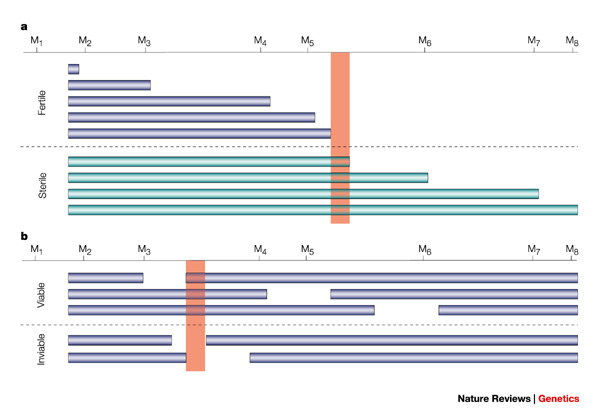Positional cloning of hybrid incompatibility genes
Keywords
Flag Inappropriate
Delete Content

Positional cloning of hybrid incompatibility genes
(A) Recombination mapping: the coloured horizontal bars indicate introgressed chromosomes. The vertical orange bar marks the position of the gene that is responsible for hybrid sterility (e.g., the Drosophila gene OdsH). Different sterile and fertile hybrids are typed for markers on the introgressed chromosomes that are known to be polymorphic between the two species (M1-M8). The pattern of marker distribution among the different hybrids allows the location of the hybrid sterility gene to be mapped at a resolution that is dependent on the concentration of informative markers in the region. (B) Deficiency mapping: the phenotypes that are associated with various overlapping chromosome deficiencies (indicated by the gaps in the bars) show the position (marked with the vertical orange bar) of the hybrid incompatibility gene (e.g., the Drosophila gene Nup96). Viable and inviable hybrids with different chromosome deletions are typed for markers that are known to be polymorphic between the two species (M1-M8). The pattern of marker distribution among the different hybrids allows the location of the hybrid inviability gene to be mapped at a resolution that is dependent on the concentration of informative markers in the region.
This image is linked to the following Scitable pages:
Hybrids between closely-related species are often inviable or sterile. How does this sterility and inviability happen? Genetics helps provide insight into answering this question.





















Comments
CloseComments
Please Post Your Comment